“It seems to me that homosexuals have made enormous progress in changing their image in this country. . .A few years back they were considered damaging, bad and immoral, but today they have become acceptable members of society. . .We should research this material and perhaps learn from it.”
– 1985 Philip Morris memo
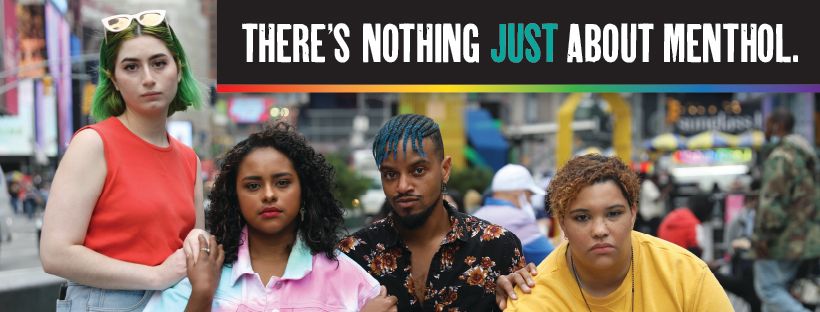
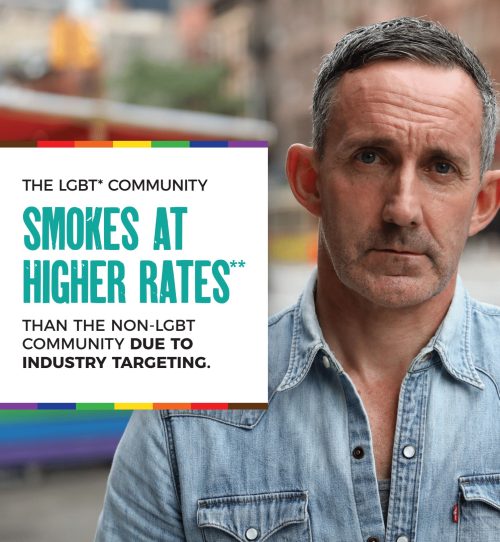
New York State Media Campaign to Raise Awareness of the Impact of Menthol-Flavored Tobacco on LGBTQIA+* Community
NYS has launched a version of the “It’s Not Just” media campaign to expose the tobacco industry’s intentional efforts to increase tobacco use, and menthol product appeal in particular, to the LGBTQIA+ community. Here’s how you can help us raise community awareness.
- Follow us on Facebook and share our posts on personal and organizational social media. Share the It’s Not Just campaign on social media as well.
- Personal stories that are honest and emotionally compelling can make significant contributions to public health education. If you or someone you know has a story to tell, we invite you to share it with us and explore ways to use your personal experience to help mobilize change.
- Do you belong to an organization, service group or youth group that would like to learn more about the impact of tobacco on the LGBTQIA+ community? We can tailor a conversation or presentation to meet your group’s needs.
- Do you prefer hard copies of materials to share with others? We can provide handouts, posters, and more to help you spread the word.
- Learn more about the history of the tobacco industry’s aggressive and targeted marketing to the LGBTQIA+ community below.
Looking for another way to get involved? Let us know. We’d be happy to partner in whatever way we can.
Menthol makes it easier to start and harder to quit
LGBTQIA+ people use tobacco, and menthol cigarettes in particular, at higher rates than people who are cisgender and straight. Because LGBTQIA+ people are grossly underrepresented in research studies, and because there are many sub-groups within the community, it’s challenging to present current and accurate information about tobacco use rates. But here’s some of what we know based on national data:
- People who identify as bisexual are twice as likely to start smoking or be current smokers.
- 5% of transgender people are current smokers compared to 14.9% of heterosexual adults.
- Black transgender youth use tobacco at six times the rate of black cisgender youth.
- 51% of lesbian/gay and 46% of bisexual smokers use menthol cigarettes, compared to 39% of heterosexual smokers.
As highlighted in the :30 campaign video to the right, the cooling and anesthetic effect of menthol-flavored tobacco makes it easier to start and allows smokers to inhale more deeply and hold the smoke in the lungs longer. As a result, menthol smokers show higher levels of nicotine addiction and decreased success quitting than non-menthol smokers.
Compounding the problem of high rates of tobacco and menthol use is the reality that it remains challenging for LGBTQIA+ people to access culturally competent, safe and welcoming health care services. This interferes with their ability to access cessation help through a primary care doctor and may explain why LGB smokers are 5x more likely to never call a quitline.
Your Involvement is important, now more than ever!
While the prevalence of stressors such as stigma, prejudice and discrimination no doubt contribute to the disproportionately high smoking rates among LGBTQIA+ people, the tobacco industry’s decades-long aggressive marketing to the LGBTQIA+ community has also played a significant role. For more than 30 years, major tobacco companies have tried to present themselves as allies to LGBTQIA+ communities through representation in tobacco ads, sponsorship of Pride events, and financial support to HIV/AIDS organizations. The goal was to make smoking, and menthol cigarettes in particular, an accepted part of queer culture.
And it worked. . .with particularly deadly consequences. While much more research is needed to fully understand the toll tobacco takes on LGBTQIA+ lives, tobacco use contributes to LGB adults having more risk factors for cardiovascular disease than straight adults. Tobacco use also causes cancer, stroke, lung diseases, diabetes, COPD and can cause complications for people living with HIV. In fact, people living with HIV, including those with access to treatment, lose more years of life from smoking than from HIV.
Check out the slide show to the left from the LGBT Cancer Network for a sampling of ads and campaigns exploiting the LGBTQIA+ community in the tobacco industry’s relentless pursuit of profits.
Learn more about what CDTFC is doing to reduce the impact of tobacco marketing in the Capital District by visiting our Tobacco Marketing page.
* We have chosen to use LGBTQIA+ (lesbian, gay, bisexual, transgender, queer, intersex, asexual, +) to reflect the diversity of sexuality and gender identity-based cultures. When single terms like “gay,” “lesbian,” “bisexual,” and “transgender” or shorter initialisms (LGB or LGBT) are used, it reflects the research on which the data presented is based. For a more comprehensive list of terms used by members of the LGBTQIA+ community to describe themselves, visit the Human Rights Campaign.
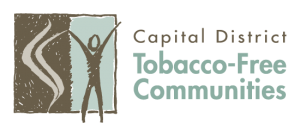







































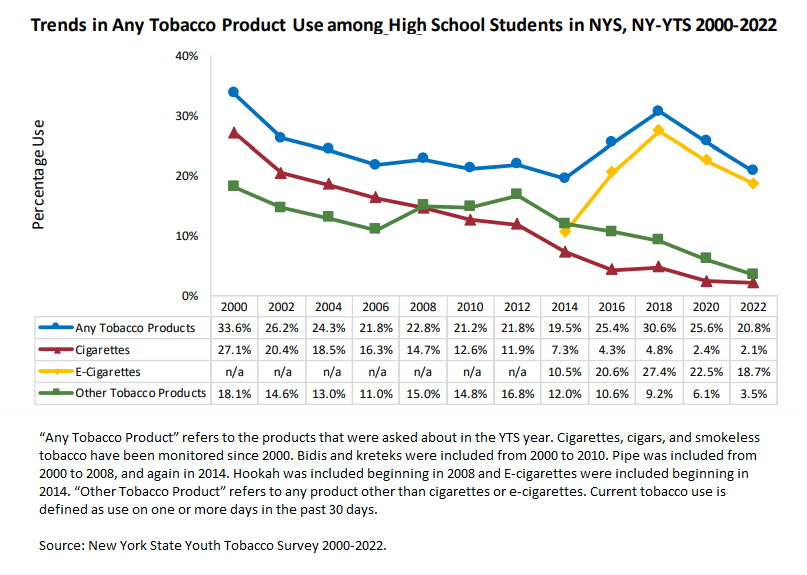
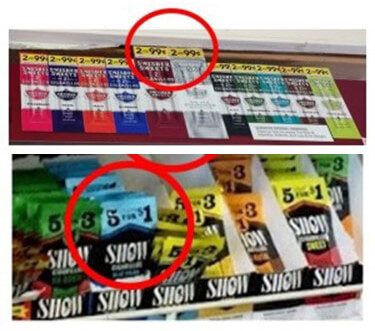
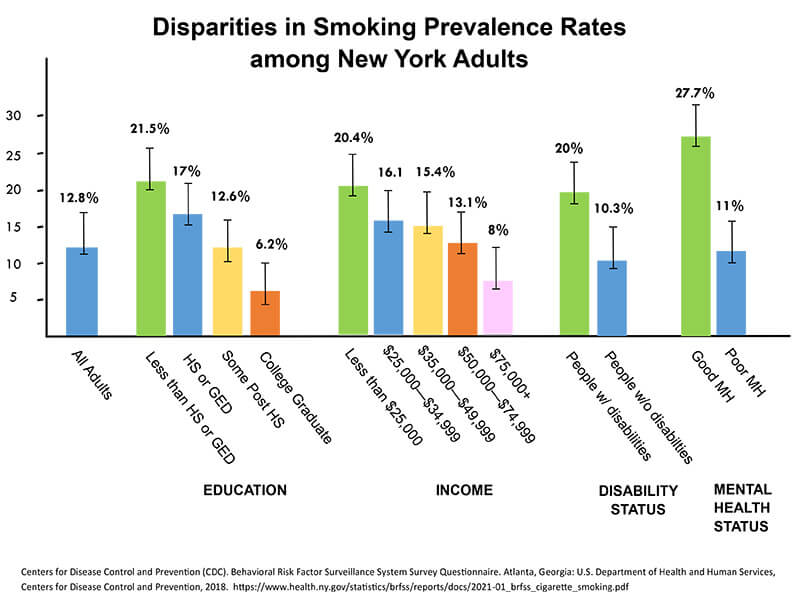
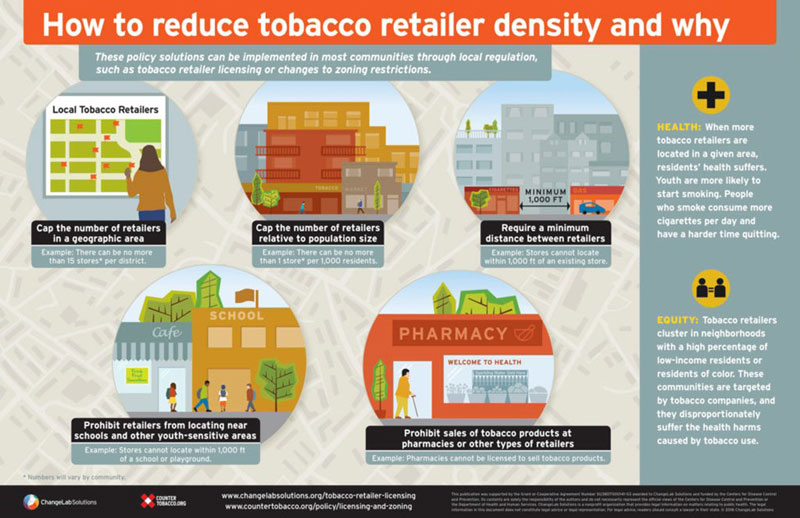



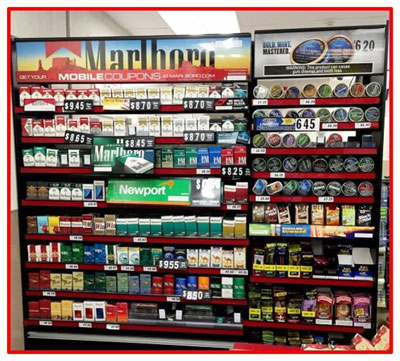 To the left is a typical tobacco product display. If you don’t use tobacco, you may not even notice, but kids do. Kids see. Kids notice. Kids remember. In fact, kids are more than twice as likely as adults to notice and remember retail tobacco marketing.
To the left is a typical tobacco product display. If you don’t use tobacco, you may not even notice, but kids do. Kids see. Kids notice. Kids remember. In fact, kids are more than twice as likely as adults to notice and remember retail tobacco marketing.